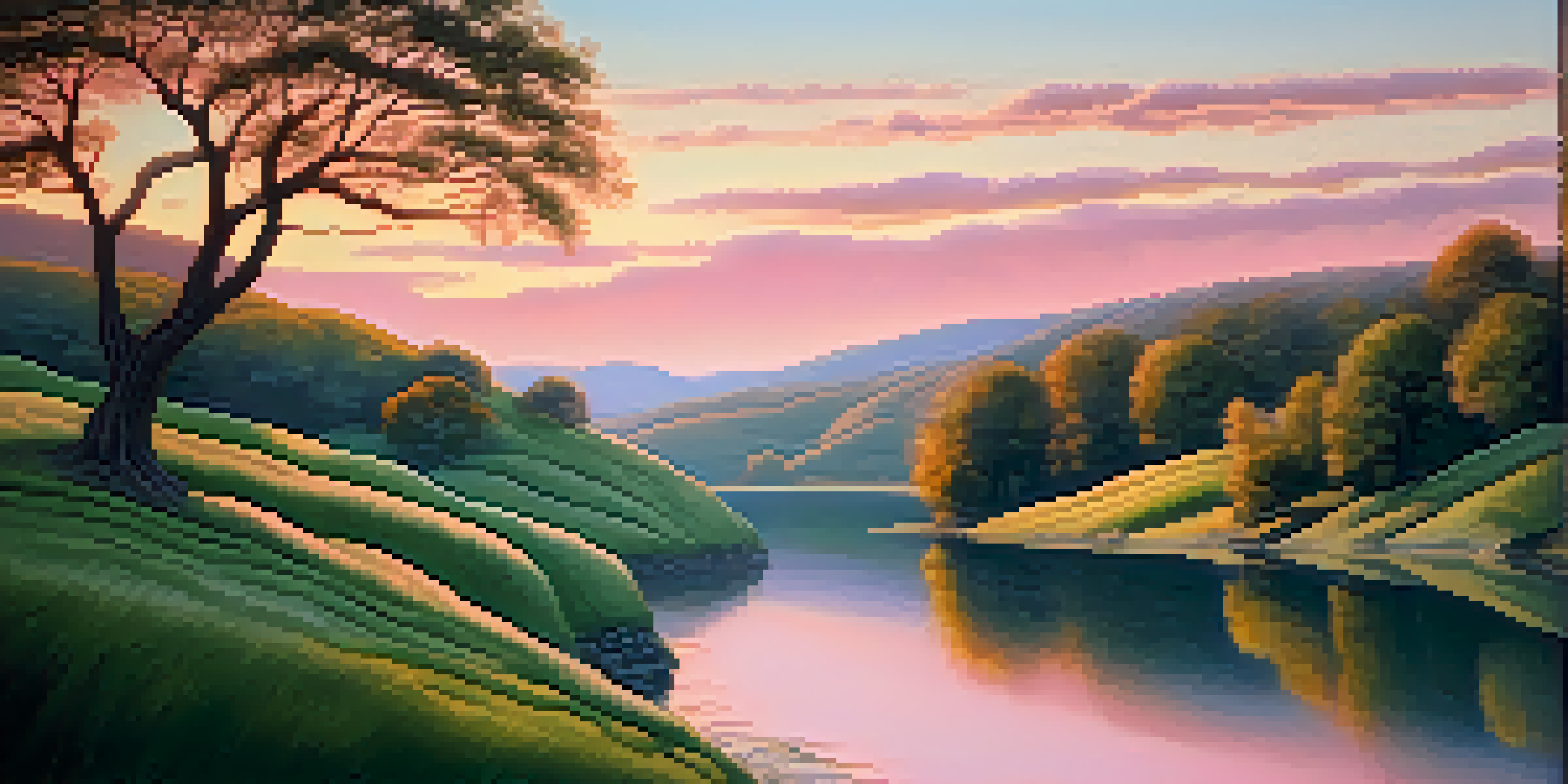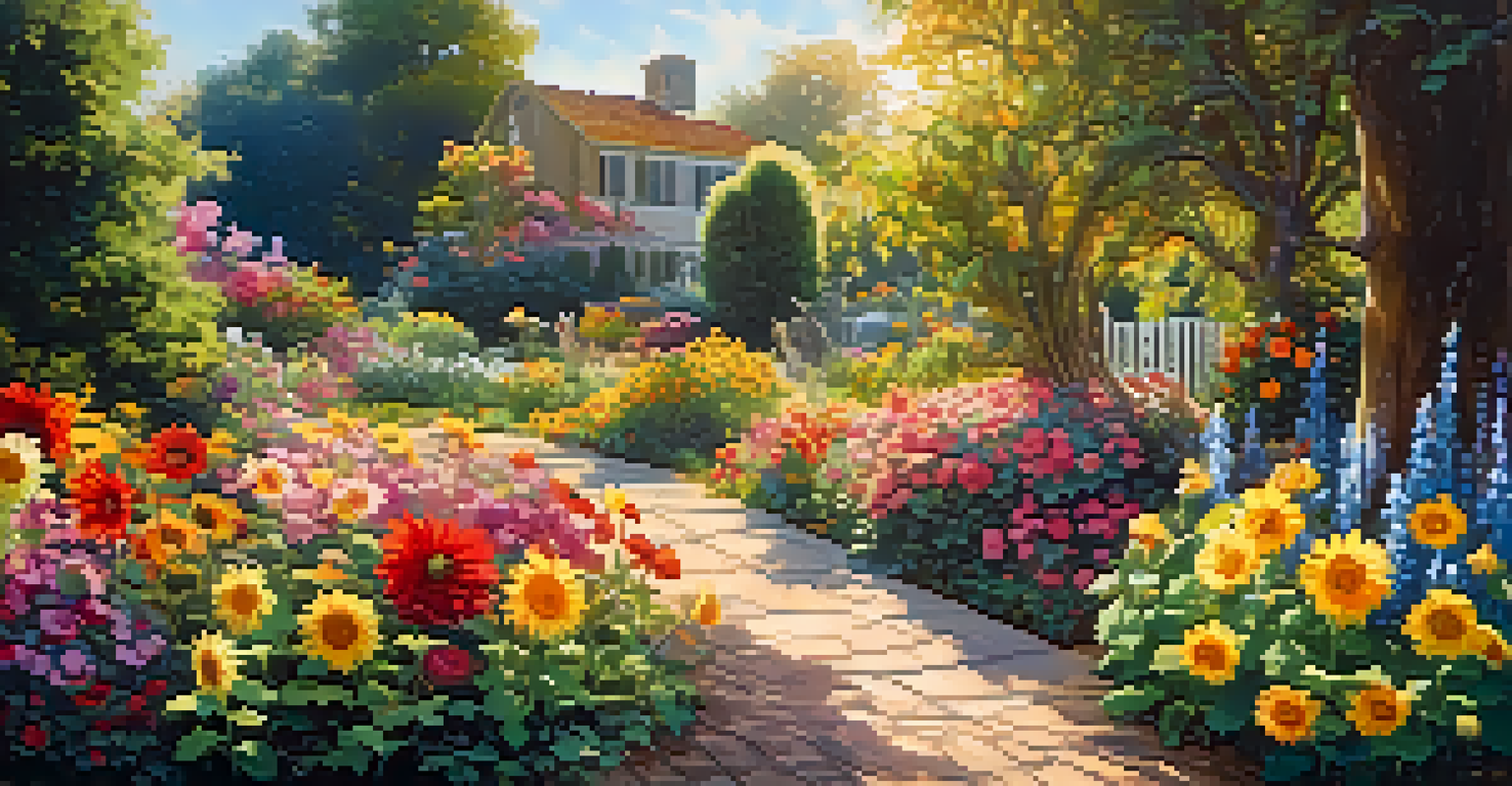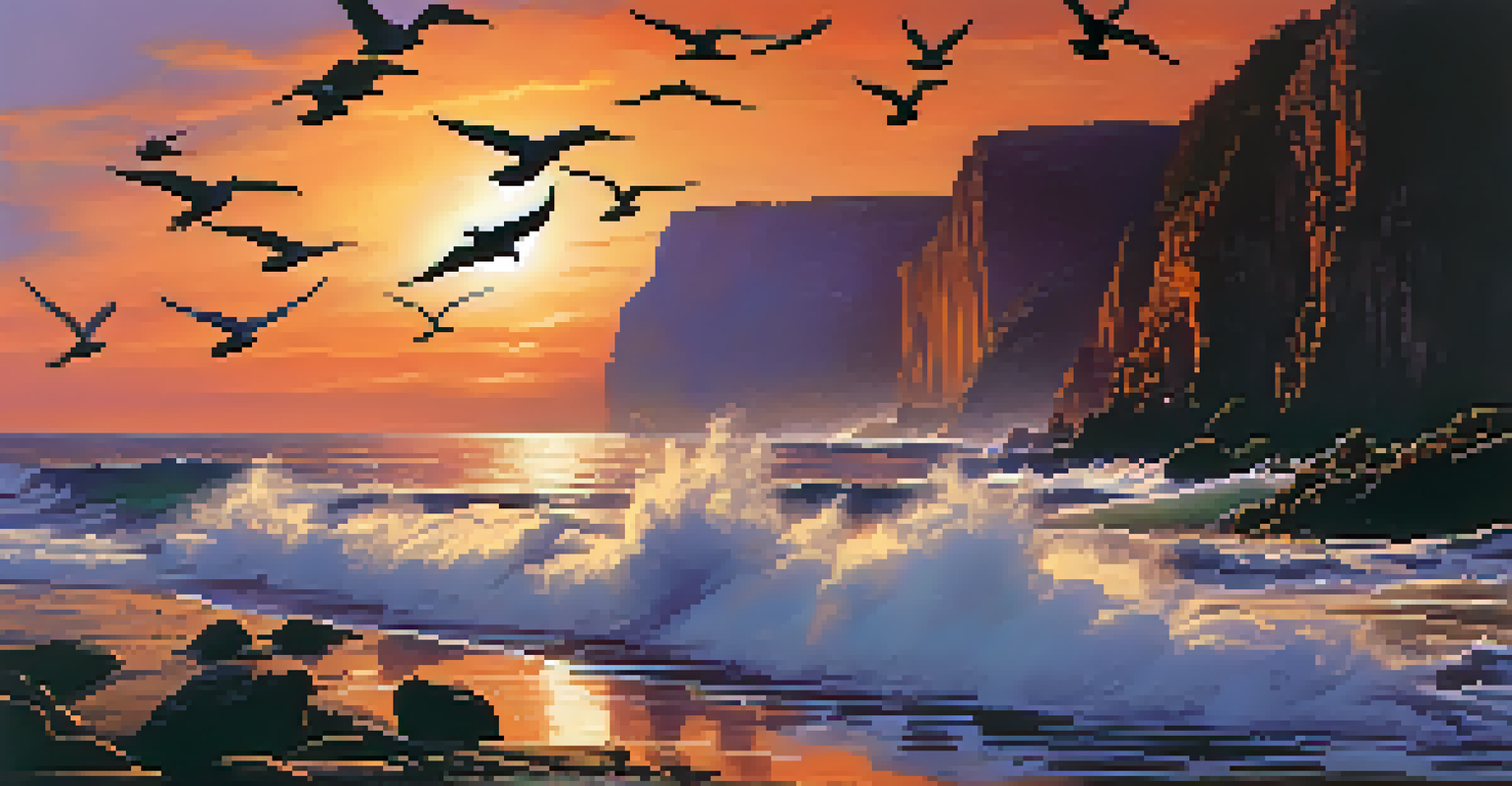Artistic Responses to Nature: A Historical Perspective

The Roots of Artistic Expression in Nature
Art has long been a medium through which humanity expresses its relationship with nature. From prehistoric cave paintings depicting animals to ancient sculptures of gods tied to fertility and harvest, early art forms reveal a deep reverence for the natural world. These early expressions not only showcased the beauty of nature but also served practical purposes, such as storytelling and spiritual connection.
Nature always wears the colors of the spirit.
As civilizations evolved, so did the themes in their art. The Greeks, for instance, celebrated the harmony of nature and human form in their sculptures and architecture, embodying ideals of balance and beauty. Similarly, in ancient China, landscape painting emphasized the importance of nature in achieving harmony and serenity, reflecting philosophical beliefs about the universe.
These foundational artistic expressions set the stage for future movements, demonstrating that art has always been an essential way for humans to connect with their surroundings and express their appreciation for the world around them.
The Romantic Era: Nature as a Muse
The Romantic Era in the late 18th and early 19th centuries marked a significant shift in how artists viewed nature. Romantic artists, such as Caspar David Friedrich and J.M.W. Turner, found inspiration in the sublime beauty of landscapes, often portraying nature as a powerful force. Their works conveyed emotions and moods that reflected humanity's awe and sometimes fear of the natural world.

This era emphasized individual experience and expression, with nature serving as a backdrop for personal reflection. For instance, Friedrich's paintings often included solitary figures gazing at vast, dramatic landscapes, suggesting a deep connection between the human spirit and the environment. This portrayal of nature not only inspired other artists but also influenced literature and philosophy.
Art Reflects Humanity's Nature Connection
Throughout history, artistic expressions have illustrated humanity's evolving relationship with the natural world, revealing both reverence and critique.
The Romantic movement's celebration of nature led to a greater awareness of environmental issues, paving the way for later artistic responses that would explore humanity's impact on the natural world.
Impressionism: Capturing Nature's Fleeting Moments
The Impressionist movement of the late 19th century brought a fresh perspective to artistic responses to nature. Artists like Claude Monet and Pierre-Auguste Renoir focused on capturing the effects of light and color in outdoor scenes, emphasizing the transient beauty of natural landscapes. Their use of loose brushwork and vibrant palettes allowed them to convey the changing moods of nature in an almost spontaneous manner.
The earth has music for those who listen.
Impressionists often painted en plein air, or outdoors, which not only influenced their techniques but also highlighted the immediacy of experiencing nature. This approach allowed them to depict scenes such as sunlit gardens or bustling rivers, capturing moments that would resonate with viewers on an emotional level. The movement also encouraged a sense of appreciation for everyday landscapes, making nature accessible to the masses.
Through their innovative techniques, Impressionists fostered a new way of seeing nature that celebrated its beauty while inviting viewers to reflect on their personal experiences with the environment.
Nature in Modern Art: A Shift in Perspective
As the 20th century unfolded, artists began to explore more abstract interpretations of nature. Movements like Abstract Expressionism and Surrealism challenged traditional representations, urging viewers to engage with nature conceptually rather than literally. Artists such as Jackson Pollock and Salvador Dalí used organic forms and chaotic compositions to evoke the essence of nature's unpredictability and complexity.
This shift reflected broader societal changes, as industrialization and urbanization distanced many people from the natural world. In response, some artists sought to reconnect with nature through their work, using it as a means to critique modern life. For example, the environmental art movement emerged, emphasizing the importance of nature and advocating for its preservation through creative expression.
Romanticism to Eco-Art: A Journey
From the Romantic Era's emotional landscapes to contemporary eco-art, artists have continually used nature as a source of inspiration and a platform for environmental advocacy.
Ultimately, modern art's exploration of nature highlighted the evolving relationship between humanity and the environment, prompting critical dialogue about ecological concerns.
Land Art: Nature as Canvas
In the 1960s and 70s, the Land Art movement emerged, redefining the boundaries of artistic practice by using the landscape itself as a canvas. Artists like Robert Smithson and Andy Goldsworthy created large-scale installations that interacted directly with their natural surroundings, often using materials sourced from the environment. This approach emphasized the impermanence of art and the idea that nature could be both a medium and a message.
Land Art challenged traditional notions of art by moving it outside conventional galleries and into the vast expanse of nature. For instance, Smithson's Spiral Jetty constructed with earth and rocks in the Great Salt Lake, invites viewers to consider the relationship between art and the environment on a physical and philosophical level. This movement not only transformed how art was created but also how it was experienced.
By engaging with nature in such a direct way, Land Art artists encouraged audiences to reflect on their own interactions with the environment, fostering a deeper appreciation for the natural world.
Nature's Influence on Contemporary Art
Today, contemporary artists continue to explore the relationship between art and nature, often addressing pressing environmental issues through their work. Many artists incorporate sustainable practices, such as using recycled materials or creating pieces that emphasize ecological concerns. This trend reflects a growing awareness of humanity's impact on the planet and the need for conservation.
For example, artists like Olafur Eliasson create immersive installations that engage viewers with natural elements, prompting them to consider their role in the environment. His work often emphasizes the beauty and fragility of nature, urging audiences to reflect on their personal connection to the world around them. Similarly, the rise of eco-art has inspired many to use their creativity to raise awareness about climate change and other environmental challenges.
Future Art: Tech Meets Nature
The future of artistic responses to nature will likely integrate technology and interdisciplinary approaches to address ecological challenges and inspire action.
Contemporary art's engagement with nature not only celebrates its beauty but also serves as a powerful medium for advocacy, encouraging viewers to take action for the preservation of our planet.
The Future of Artistic Responses to Nature
As we look to the future, the relationship between art and nature will likely continue to evolve in response to global challenges. Artists are increasingly utilizing technology and innovative materials to explore new dimensions of this connection. Virtual reality, for example, allows immersive experiences that can transport viewers to natural landscapes, fostering a sense of wonder and urgency regarding environmental issues.
Furthermore, collaborations between artists and scientists are becoming more common, blending creativity with research to address ecological concerns. This interdisciplinary approach can lead to impactful projects that raise awareness and inspire action, showcasing the power of art as a catalyst for change. Artists are also experimenting with biodesign, integrating living organisms into their work to create dynamic, evolving pieces.

Ultimately, the future of artistic responses to nature promises to be rich and diverse, as artists continue to inspire and provoke thought about our place within the natural world, urging us to cherish and protect it.